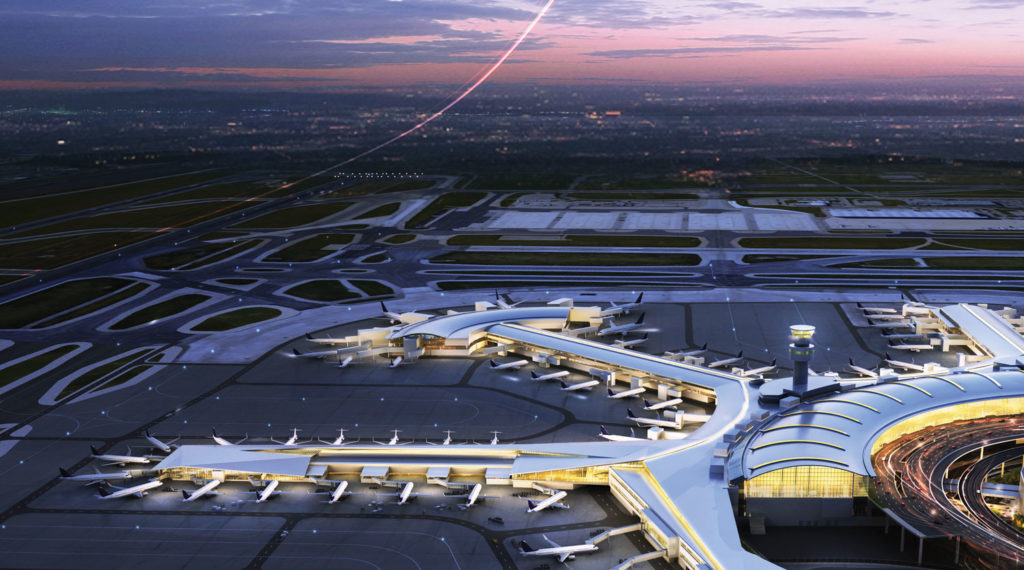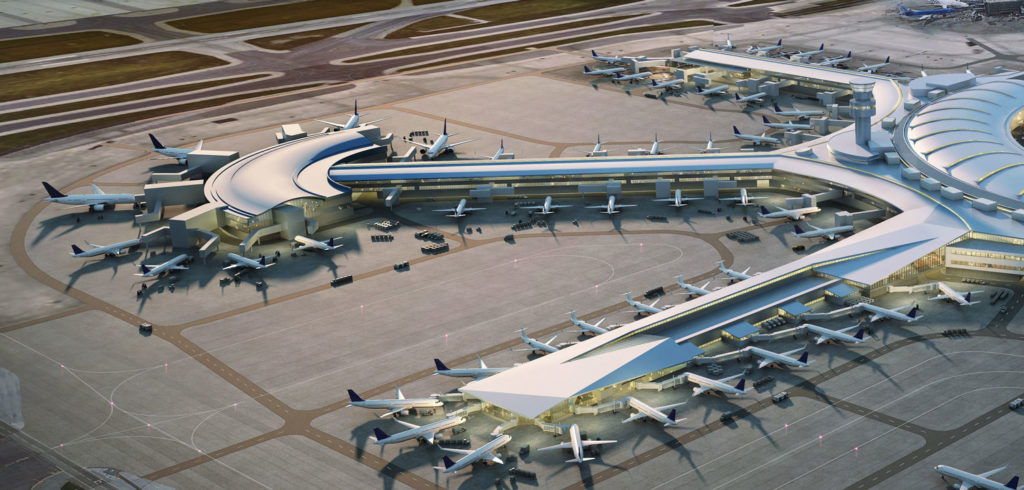Tony Crepinsek, associate director of infrastructure redevelopment at the Greater Toronto Airports Authority, tells Passenger Terminal Today about the Pier G project at Toronto Pearson Airport.
The Pier G project is a major addition to the existing Transborder Gate 193 facility and will include major north and south additions to the existing facility. Both additions will feature a new three-level terminal building, including a full basement, as well as departures and arrivals transfer levels. The north addition will also provide main connectivity back to the main Terminal 1 processor at all levels. The Pier G project will include upgrades to the passenger experience, including extensive new retail and airline lounges, as well as gates that are bridge-loaded rather than ground-loaded.
Toronto Pearson is Canada’s largest airport and the most internationally connected airport in North America according to OAG. Last year we served 49.5 million passengers, and forecasts indicate that by 2037 we could serve 85 million passengers annually. Pier G is required to provide additional transborder capacity. This includes six additional wide-body (five Code C and one Code E) gates and the upgrade of five existing walk-out gates on the west side of the existing Gate 193 to new, fully bridged gates.
The new facility will provide additional capacity to accommodate an estimated two million additional passengers per year. It will also provide an enhanced passenger experience and the new bridged transborder gates will enable Pier F to be more fully utilized for international flights, with transborder operations moving to Pier G.
 The new additions being developed provide more direct connectivity back to the main terminal processor with improved passenger flows and new people moving devices (escalators, elevators) to provide more direct and intuitive movements. Furthermore, the new additions will allow for improved separation of arriving and departing passengers to ensure the proper level of passenger sterility as required by the government agencies.
The new additions being developed provide more direct connectivity back to the main terminal processor with improved passenger flows and new people moving devices (escalators, elevators) to provide more direct and intuitive movements. Furthermore, the new additions will allow for improved separation of arriving and departing passengers to ensure the proper level of passenger sterility as required by the government agencies.
The project is currently in the design stage with some early work packages proceeding this autumn, including airline office relocations and relocation of an interim arrivals/departures corridor. The Pier G project is being designed and built to achieve LEED Gold accreditation. In addition, the facility will feature glass passenger board bridges like those already installed at the recent Gate 193 Arrivals corridor.
Minimal operational impact
Construction is being closely coordinated by the Greater Toronto Airports Authority (GTAA) Aviation Services and Customer and Terminal Services groups on a daily basis to ensure minimal operational impact to the existing Gate 193 facility. In addition, all new work is being completed while either maintaining a groundside-accessible site (north addition) or completely separating the worksite from the operational airside by way of a controlled airside fenced area (south addition). As you can imagine, all such separations between groundside and the airside require very close coordination with our GTAA Security Services group.
Other key projects
GTAA is also currently undertaking a major investment in baggage system upgrades in both Terminals 1 and 3. As part of the project, new Early Bag Storage (EBS) systems are being installed in those terminals, to provide additional overall baggage processing capacity and support connections traffic through Pearson.
We are also in the early stages of concept design for a regional transit and passenger processing center. The Toronto area’s congestion has contributed to the region being ranked as having the sixth-worst commute of all major cities in the world, and the worst in North America. The area around the airport, called the Airport Employment Zone, is the second-largest cluster of jobs in all of Canada. Currently, some one million car trips a day are taken into and out of the airport employment zone and driving times to Toronto Pearson are expected to rise by an average of 30% in the next 20 years.
It will be the latter part of the 2020s before the transit center is built. In the meantime, the GTAA will continue to advance the planning on the facility as a means of better connecting people to the airport, and the to the rest of the region, whether for work or play.



